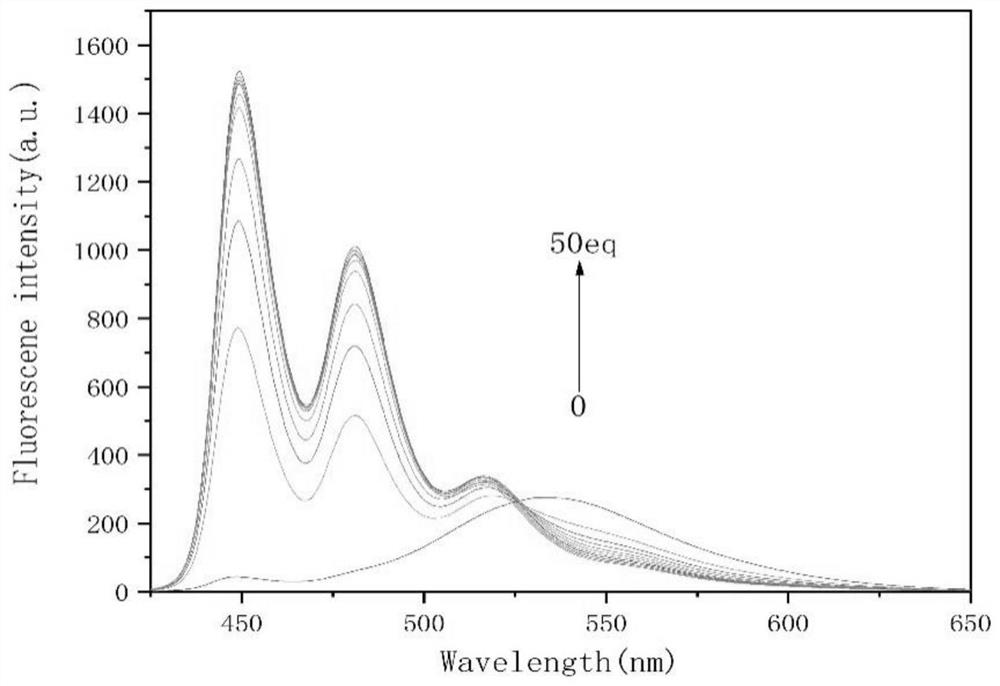Preparation method of reactive fluorescent probe for rapid hydrazine detection
A fluorescent probe and reactive technology, applied in the field of fluorescent probes, achieves the effect of cheap and easy-to-obtain raw materials, simple synthesis steps, and specificity
- Summary
- Abstract
- Description
- Claims
- Application Information
AI Technical Summary
Problems solved by technology
Method used
Image
Examples
Embodiment Construction
[0031] First, at room temperature, to FeCl 3 ·6H 2 Powdered 2-naphthol (43.25 g, 0.3 mol) was added to O (162.17 g, 0.6 mol, 0.0024 mol / L) aqueous solution, and the suspension was heated to 50° C. and stirred for 3 h. After cooling and filtering, the isolated solid was dissolved in CH 2 Cl 2 , resulting in CH 2 Cl 2 After the solution was washed three times with distilled water, it was decolorized with activated carbon and dried with magnesium sulfate. After the magnesium sulfate was removed by filtration, the solvent was removed in vacuo to obtain a solid crude product. The crude product was vacuum-dried at room temperature and recrystallized with toluene to obtain white needle-like pure 1,1'-bi-2-naphthol.
[0032] Then, 1,1'-binaphthol (1.0047g, 3.5mmol), K 2 CO 3 (0.9696g, 7mmol), CuCl (0.1054g, 1.05mmol) were added to a round bottom flask, 20mL of m-xylene was added at room temperature, heated, stirred fully to dissolve, and after the solution became transparent, s...
PUM
| Property | Measurement | Unit |
|---|---|---|
| Limit | aaaaa | aaaaa |
Abstract
Description
Claims
Application Information
 Login to View More
Login to View More - Generate Ideas
- Intellectual Property
- Life Sciences
- Materials
- Tech Scout
- Unparalleled Data Quality
- Higher Quality Content
- 60% Fewer Hallucinations
Browse by: Latest US Patents, China's latest patents, Technical Efficacy Thesaurus, Application Domain, Technology Topic, Popular Technical Reports.
© 2025 PatSnap. All rights reserved.Legal|Privacy policy|Modern Slavery Act Transparency Statement|Sitemap|About US| Contact US: help@patsnap.com



